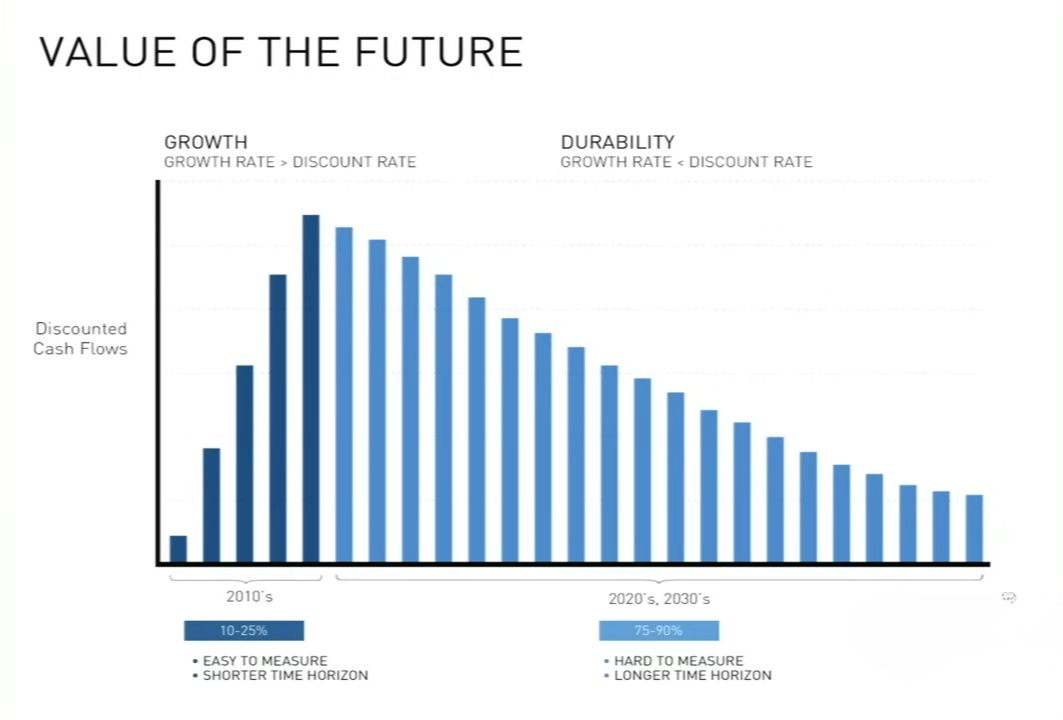The Slide Everyone Ignores
Sometimes alpha is hidden in plain sight
Everyone in Silicon Valley knows Peter Thiel's Zero To One (and the accompanying lecture). But almost everyone misses the most important part.
It's the part that why some billion-dollar startups fail. And why some slow-growing companies end up worth more than the fast ones.
Simply: founders overvalue growth and undervalue durability.
Growth is easy to measure because you can see it. You can look at your charts and see exactly how fast your company is growing this month or this quarter.
Durability is harder to measure but more important. Durability means whether your company will still be winning ten years from now. Will your current edge – better tech, network effects, pricing power, etc. – continue to endure? This is much harder to predict, so founders often ignore it.
Thiel first discovered this at PayPal. In 2001, PayPal had been running for 27 months. The company was growing at 100% per year.
But when they calculated the company's total value, they found something surprising: Three-quarters of PayPal's value came from money the company would make ten years later, in 2011 and beyond.
Even though PayPal was growing fast in 2001, most of its worth depended on being around and successful much later.
Thiel states that the same pattern shows up in every tech company. When you do the math, about 75% of a tech company's value comes from cash flows many years in the future. The growth happening right now matters less than most people think.

Think about WeWork: explosive growth, $47 billion valuation, near collapse. Or Groupon: fastest company ever to $1 billion in revenue, then an 80% stock drop. Both had growth. Neither had durability.
Compare that to Nintendo, which built a business that could survive a century, not just a quarter.
I wrote this as a reminder to myself. Growth gets the headlines. Durability gets the value.